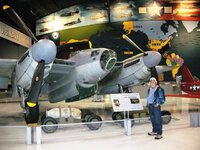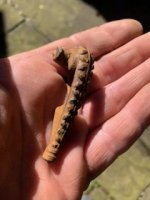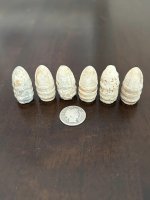packerbacker
Gold Member
WOW....thanks for sharing those pics. I absolutely love old aircraft, heck I even like the newer ones. I was in Naval aviation myself but during the Vietnam era. This is a pic of a friend of mine in front of a restored Mosquito located at the Oshkosh, Wisconsin EAA museum. We spent a day there. It's planes like these and the gutsy guys that flew them that won the war.








